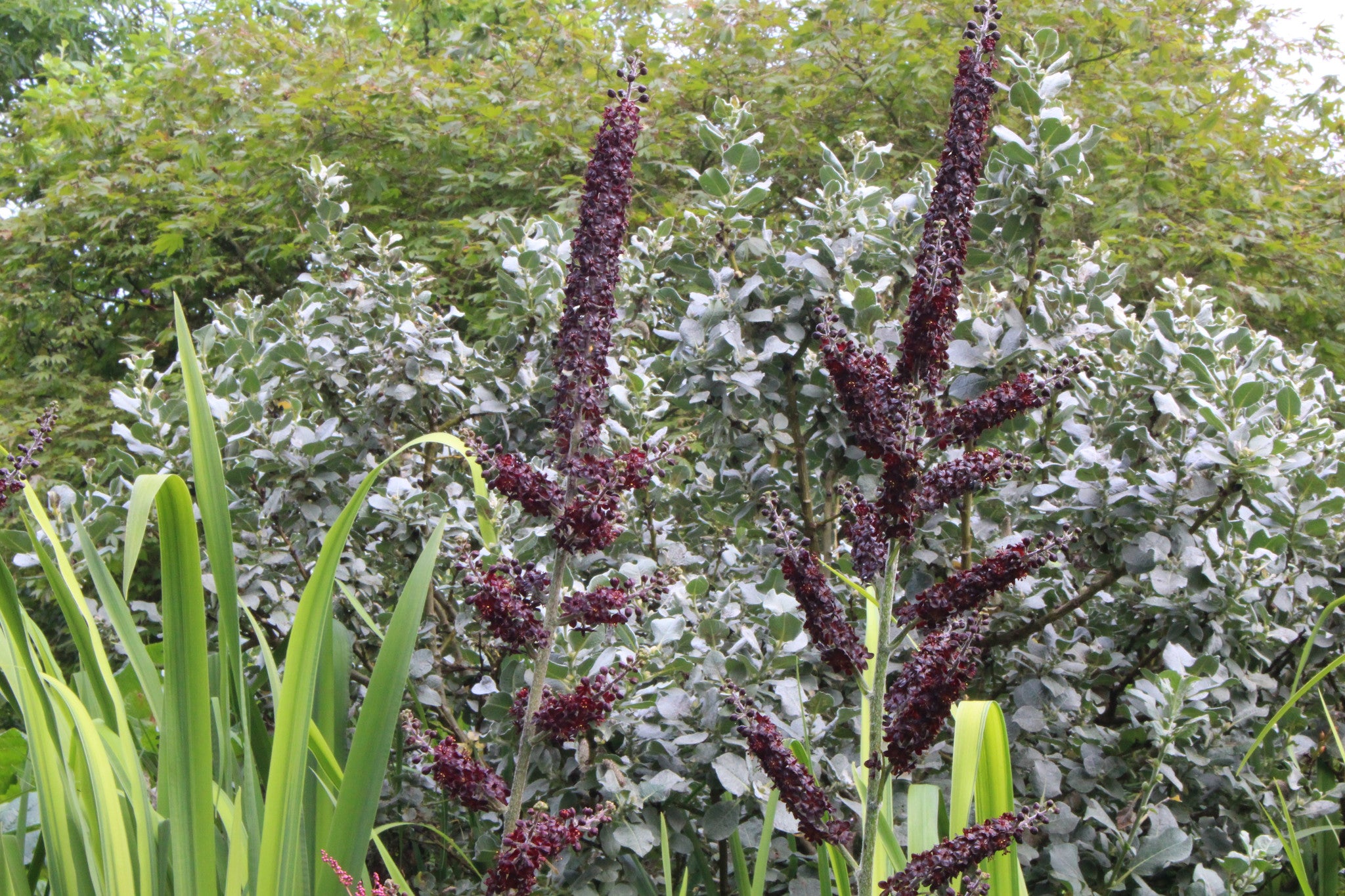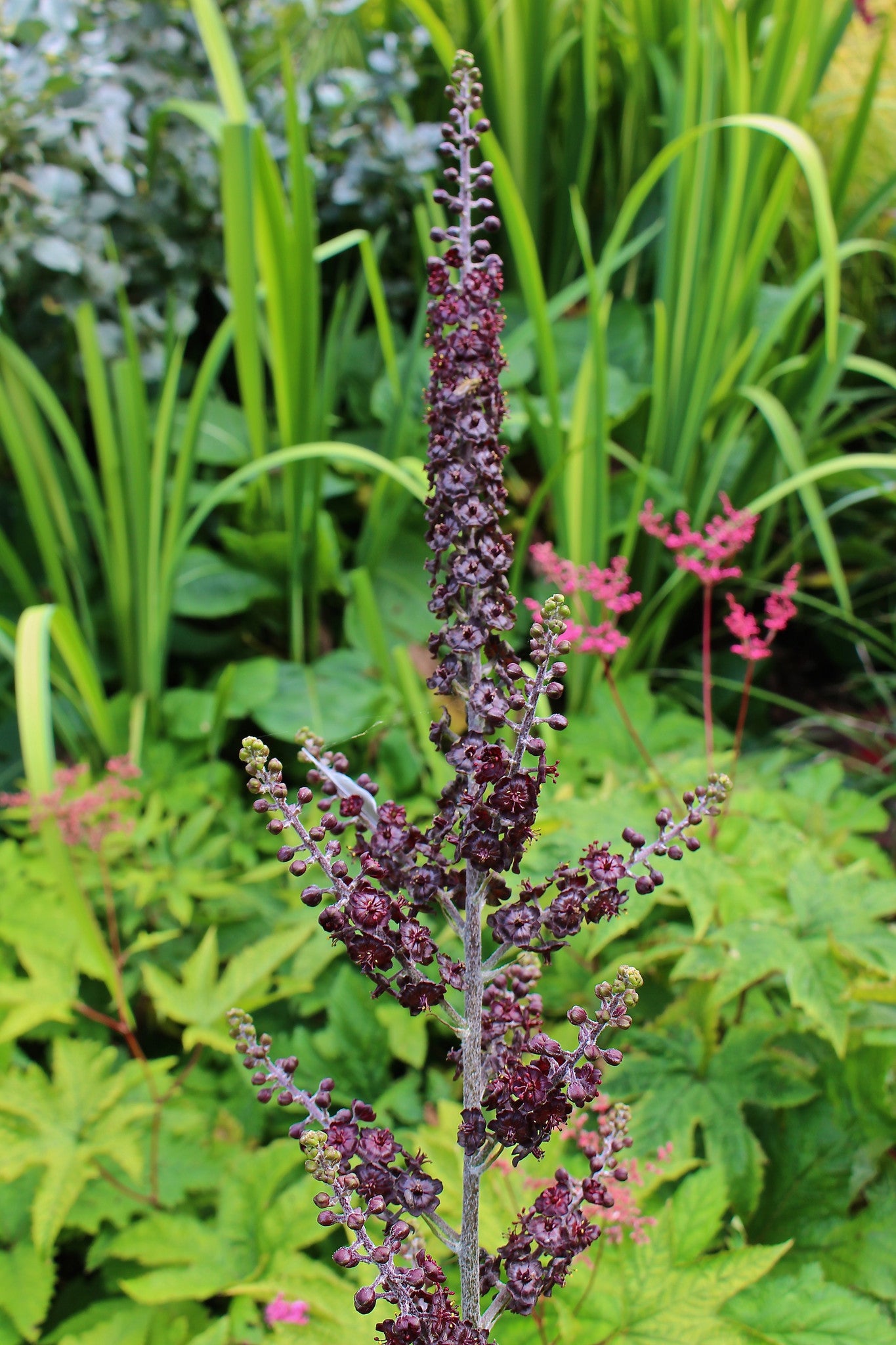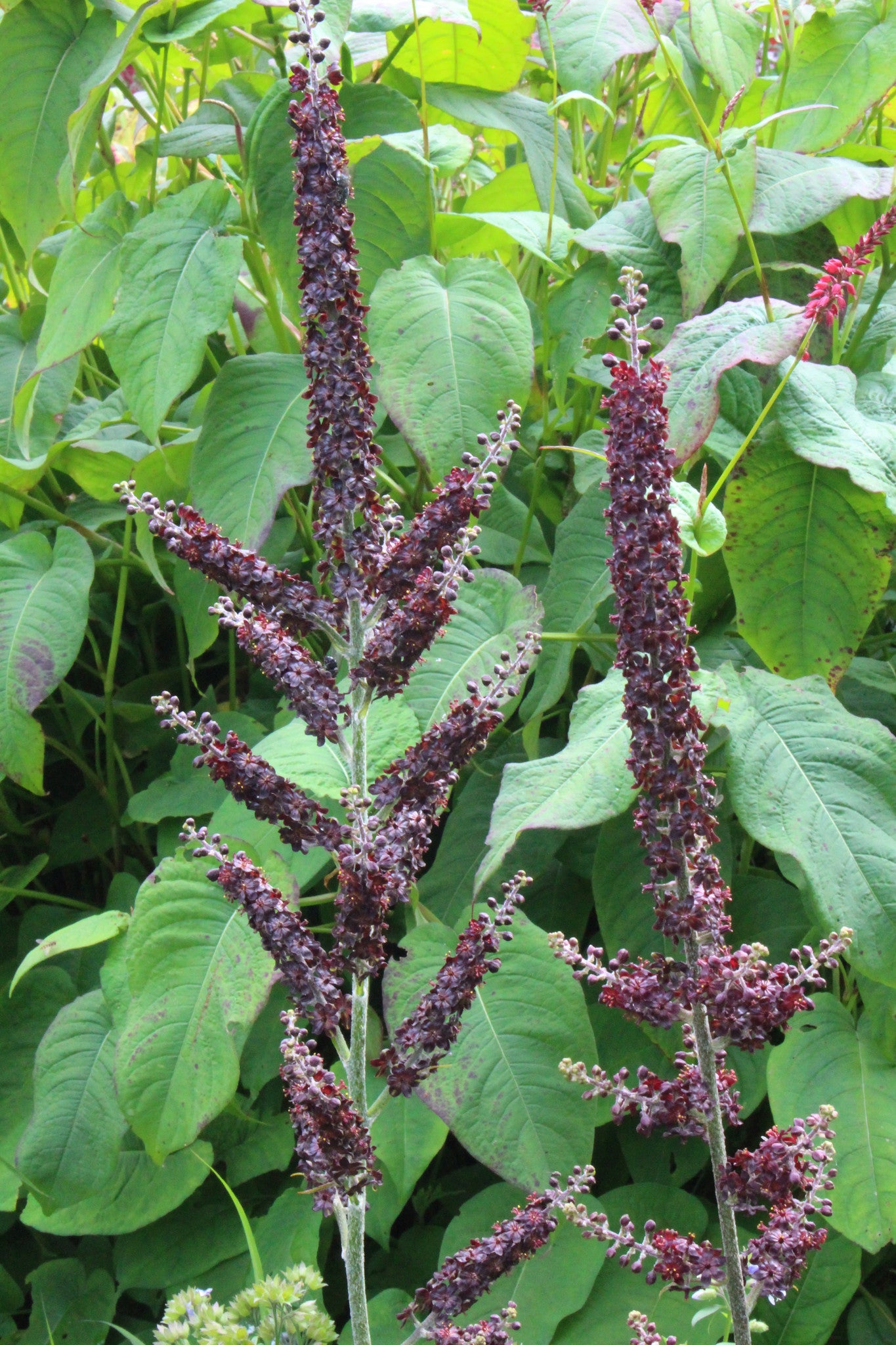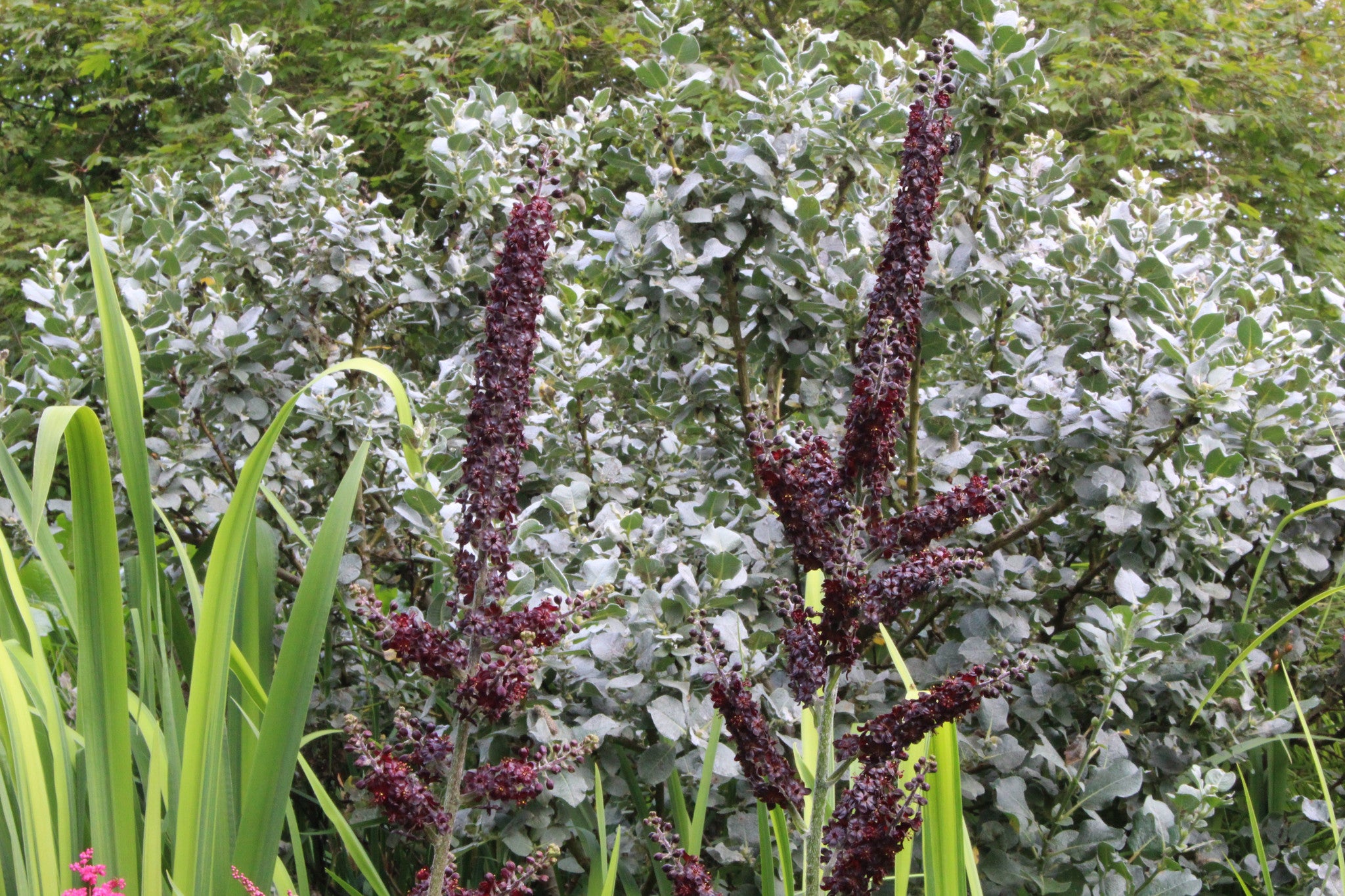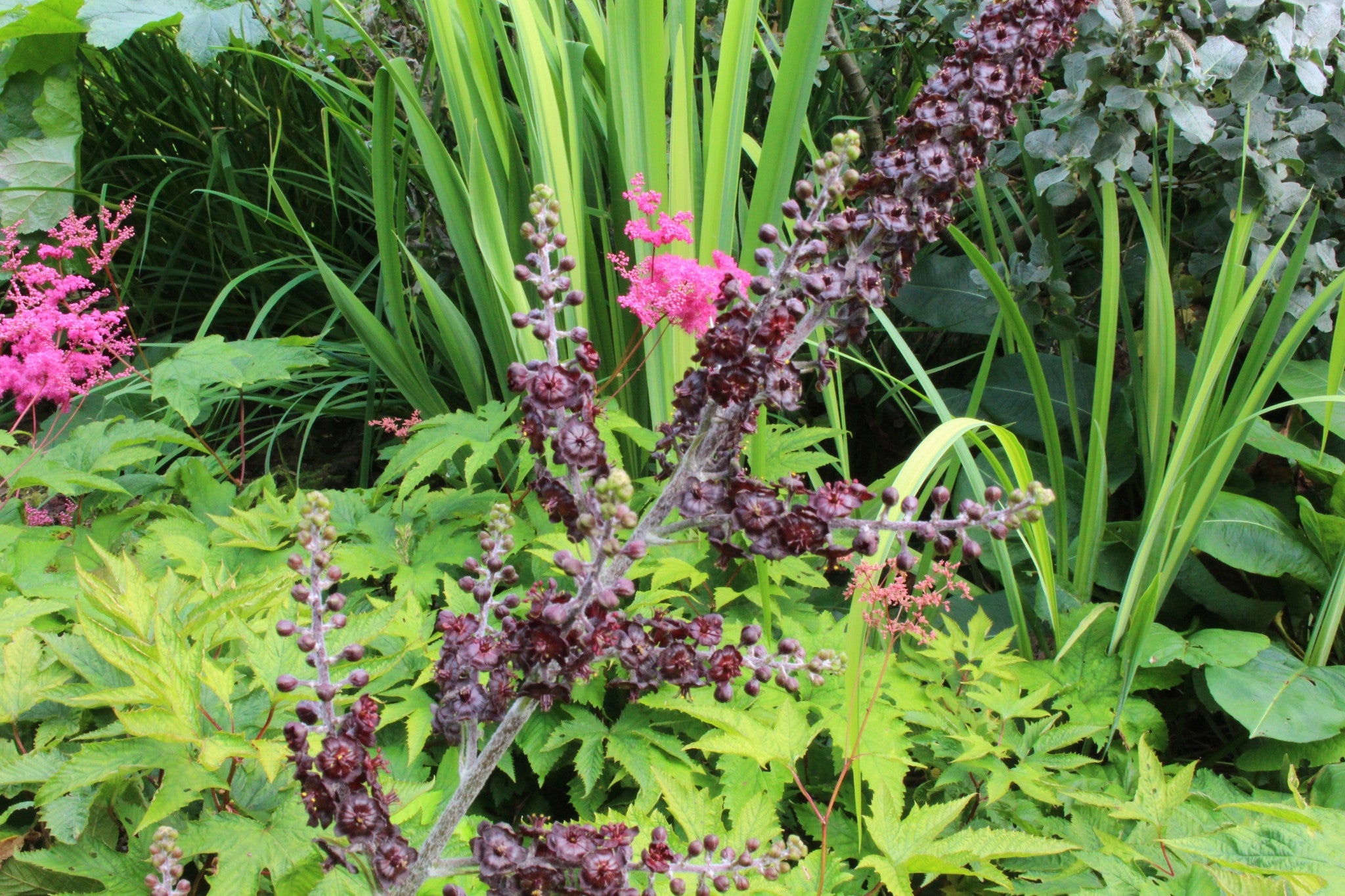Veratrum nigrum
Approx. 0.5 litre pot
About this cultivar:
Veratrum nigrum is dark by name and dark by nature, being both dark flowered and poisonous. The plant was widely known even in ancient times. For example, Lucretius (99 – 55 BC) and Pliny the Elder (23 – 79 AD) both knew of its medicinal emetic as well as deadly toxic properties. Above broad smooth foliage long, green, coarse, woody spike racemes branch off in decussate patterns from the main trunk, with short pedicels supporting a single flower. The flowers are purple-black, giving the plant its name.
Veratrum nigrum was used as an ornamental plant in European gardens at least as far back as 1773. It was in common use in 1828, and Charles Darwin grew it in his garden in the 1840s. The plant is still widely used in gardens in Europe and Asia because of its striking black flowers. It is also used to add height to a garden, and as a means of providing a darker backdrop to more brightly colored plants and flowers. The large seed pods weather winter well (tending not to drop in high wind), and it can be a striking winter ornamental seedpod plant as well.
Unsurprisingly this dark, moody, spectacular plant has gained the Royal Horticultural Society's Award of Garden Merit..
- Position: Full sun, partial shade
- Soil: Almost any soil, grows well in Ballyrobert
- Flowers: June, July, August
- Other features: Royal Horticultural Society Award of Garden Merit (RHS AGM), Grows well in Ballyrobert
- Hardiness: Fully hardy, grows well in Ballyrobert
- Habit: Clump forming, Columnar or Upright
- Foliage: Deciduous
- Height: 105 - 145 cm (3.5 - 4.5 ft)
- Spread: 30 - 60 cm (1 - 2 ft)
- Time to full growth: 2 to 5 years
- Plant type: Herbaceous Perennial
- Colour: Green, purple, black
- Goes well with: --
About this genus:
Veratrum is a genus of flowering plants in the family Melanthiaceae, native. It occurs in damp habitats across much of temperate and subarctic Europe, Asia, and North America.
They are herbaceous perennials with highly poisonous black rhizomes, and panicles of white or brown flowers on erect stems. In English they are known as the false hellebores or corn lilies. However, they are not closely related to lilies or hellebores, nor do they resemble them. So I guess it is a false name.
Members of Veratrum are known both in western herbalism and traditional Chinese medicine as toxic herbs to be used with great caution. They contain highly toxic steroidal alkaloids that cause rapid cardiac failure and death if ingested. DO NOT EAT! All parts of the plant are poisonous, with the root and rhizomes being the most poisonous. Symptoms typically occur between 30 minutes and 4 hours after ingestion and include nausea and vomiting, abdominal pain, numbness, headache, sweating, muscle weakness, bradycardia, hypotension, cardiac arrhythmia, and seizures. DO NOT EAT!
During the 1930s Veratrum extracts were investigated in the treatment of high blood pressure in humans. Surprise surprise, patients treated often suffered side effects. Treatment soon stopped. DO NOT EAT!
Native Americans harvested the roots for medicinal purposes during the dormant period- where they are not as posionous. However they also used the juice pressed from the roots of this plant to poison arrows before combat. The dried powdered root of this plant was used as an insecticide. DO NOT EAT!
So what about in the garden!? Their natural habit gives us a hint. Widely distributed in montane habitats of temperate Northern Hemisphere, Veratrum species prefer full sunlight and deep, wet soils, and are common in wet mountain meadows, swamps, and near streambanks. Dry soil is a no-no however part shade is fine. We tend to grow them with Iris, more for practical (wet soil) than aesthetic purposes.

